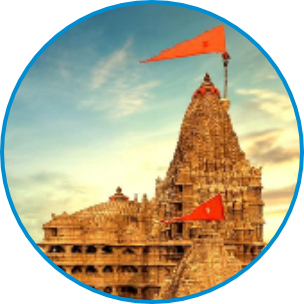
PLACES TO VISIT
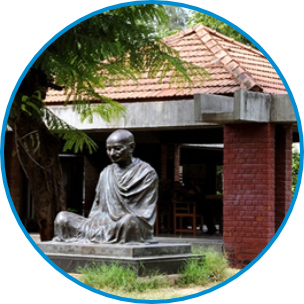
GANDHI ASHRAM
Sabarmati Ashram (also known as Gandhi Ashram) is located in the Sabarmati suburb of Ahmedabad, Gujarat, adjoining the Ashram Road, on the banks of the River Sabarmati, 4 miles (6.4 km) from the town hall. This was one of the many residences of Mahatma Gandhi who lived at Sabarmati (Gujarat) and Sevagram (Wardha, Maharashtra) when he was not travelling across India or in prison.
He lived in Sabarmati or Wardha for a total of twelve years with his wife Kasturba Gandhi and followers, including Vinoba Bhave. The Bhagavad Gita was recited here daily as part of the Ashram schedule.
It was from here that Gandhi led the Dandi march also known as the Salt Satyagraha on 12 March 1930. In recognition of the significant influence that this march had on the Indian independence movement, the Indian government established the ashram as a national monument.
ATAL BRIDGE
This iconic Atal bridge is the first of its kind in the country. It will connect the west and east parts of the Sabarmati Riverfront. It has drawn inspiration from the Kites and the celebration of Uttrayan. Even the colours chosen reflect the hues of the kites. To feel the joy of walking above the river, this glass Atal bridge is constructed between Sardar Bridge and Ellis Bridge. The bridge is solely for walking purposes and also has seating arrangements for the people to enjoy the beauty of the river from the bridge. Plantation of various trees is also done to have some green cover on the bridge.

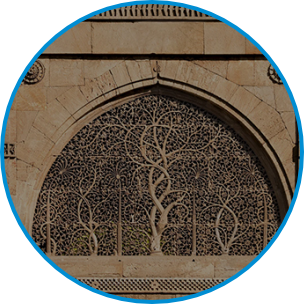
SIDI SAIYYED MOSQUE
This mosque is one of the most famous mosques in Ahmedabad. The Sidi Saiyyed Mosque is popularly known as Sidi Saiyyed Ni Jali. It was built by Sidi Saiyyed in the retinue of Bilal Jhajar Khan, general in the army of the last Sultan Shams-ud-Din Muzaffar Shah III of the Gujarat Sultanate. It is situated in the heart of the 600-year-old walled city of Ahmedabad. The design of the mosque is entirely in the arcuate system of construction. It consists of arches, domes, squinches, and vaults. The mosque is set up like a theatre without a fourth wall, celebrated for the intricately carved filigree work on its jalis.
The rear wall is filled with square stone pierced panels in geometrical designs. The 20th-century Indologist and art historian Vincent Arthur Smith described these jalis as the “most artistic stone lattice-work to be found anywhere in the world.”
BHADRA FORT
Climb up the Bhadra Fort and get a bird’s eye view of the old city. Built immediately after the founding of Ahmedabad in 1411, Bhadra Fort now houses government offices and a Kali temple. Its gate formed the eastern entrance of the Ahmedabad citadel, which stretched west to the river. From the roof, you can check out the imposing structure and views of the surrounding streets. Between the fort and the Teen Darwaja (Triple Gateway) to its east was the Maidan Shahi (Royal Square), where royal processions and polo games took place.
Bhadra Fort was built by Ahmed Shah, the founder of the city, in 1411 AD. The fort’s name was taken from the Bhadrakali Temple that stands nearby. The fort was also called Aark fort centuries ago. The British captured the fort in 1817 and used it as a prison until Independence. It was duly renovated in 2014 so that people could get a glimpse of history.
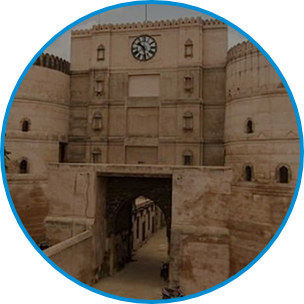
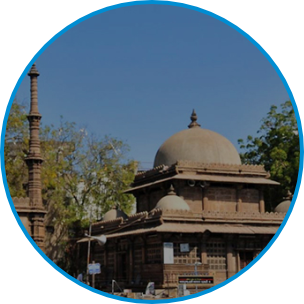
RANI SIPRI'S MOSQUE
Rani Sipri’s Mosque also known as Rani Sipri ni Masjid or Masjid-e-nagina, formerly known as Rani Asni’s Mosque, is a medieval mosque in the walled city of Ahmedabad, Gujarat in India. This mosque was commissioned in 1514 by Queen Sipri, the Hindu wife of Mahmud Begada, a sultan who ruled Gujarat.
JAGANNATH TEMPLE
The Jagannath Temple is a temple dedicated to the Hindu God Jagannath in the city of Ahmedabad in the Gujarat state of India. The temple located in the Jamalpur locality was established by Sadhu Sarangdasji about 450 years ago. The temple is famous for its annual chariot festival, the Rath Yatra, which is the third most important and largest after the Ratha Yatra at Puri.

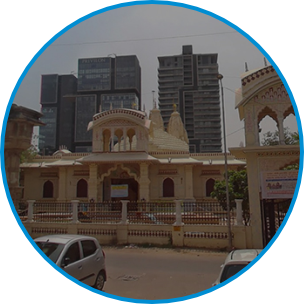
ISKON TEMPLE
At a distance of 13 km from Ahmedabad Junction, ISKCON Temple is a Hindu temple located on Sarkhej-Gandhinagar Highway in Ahmedabad, Gujarat. Also known as Sri Radha Govind Dham, it is one of the top places of pilgrimage in Gujarat and among the famous places to visit in Ahmedabad.<BR>
ISKCON Temple in Ahmedabad is dedicated to Lord Krishna and his beloved lover Radha. The temple was opened in 1997 on the orders of A. C. Bhakti Vedanta Swami Prabhupada, the founder of the ISKCON Society. The temple has much significance as it is still considered the most popular temple in Ahmedabad. The idols of Lord Krishna & Radharani are attractive and many people come here for worshipping Lord Krishna to fulfil their needs.<BR>The temple houses the deities of Radha – Govinda, Nitai-Gauri, Rama Sita Lakshman Hanuman, Jagannath Baldev, Sri Nathji, Subhadraji and idols of Srila Prabhupada and Srila Bhaktisiddhanta Saraswati.
Kalupur Swaminarayan Temple
The origin of the temple goes back to early 19th century when the British had dominance in most parts of India. This is the first temple of the Swaminarayan sect, and was built on the instructions of the founder, Shree Swaminarayan Bhagwan. An officer, Sir Dunlop was so enthralled with activities of Swaminarayan, that on behalf of the government he donated 5,000 acres for the temple to be set up. Once the impressive structure was ready, a 101 gun salute to the temple was organised by him. Different sections of the temple were added subsequently. The main structure was divided into the North Gateway, Nar Narayan Temple, Akshar Bhawan, Rang Mahol and residences for holy women and students. A mansion built by Acharya Maharjshree Keshavprasadji Maharaj came up in 1871.

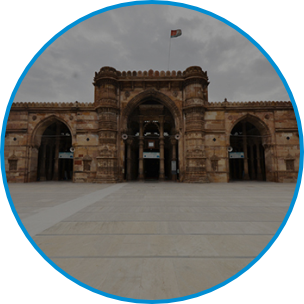
Jama Masjid
Jama Masjid also known as Jumah Mosque or Jami’ Masjid, is a mosque in Ahmedabad, and was built in 1424 during the reign of Ahmad Shah I. The inscription on the central mihrab commemorates the inauguration of the mosque on the 1st Safar A.H. 827 or January 4, 1424 A.D. by Sultan Ahmad Shah I. The mosque lies in the old walled city, and it is situated outside Bhadra Fort area. The old walled city is divided into separate quarters or pols, and the Jami’ Masjid is found on the Gandhi Road. Along the south side of the road, the mosque is a short distance beyond the Teen Darwaza or Tripolia Gate.
The Jama Masjid was the fifth mosque structure built during Ahmed Shah I’s reign. The prior mosques had either been modest in size or were for private use. The Jama Masjid was the complete opposite of its predecessors in that it was a large, grandiose structure. The mosque complex has a large paved courtyard that can be entered from three different directions. The courtyard has an ablution tank in the middle. The west side of the building is home to the prayer hall. The entire mosque is emblematic of what came to be known as Gujarat style architecture.
Vaishnodevi Temple
The Vaishnodevi Temple is a stone-built place of worship located along the Sarkhej Gandhinagar Highway, also known as the Vaishnodevi Circle. The temple architecture is a 50-foot-diameter carve into an artificial rock. The temple, which boasts a 1350-square-foot hall, can accommodate up to 5000 devotees at any given time.
The Vaishnodevi Temple in Ahmedabad is a miniature replica of the Vaishnodevi Temple in Katra, Jammu and Kashmir. It is dedicated to Vaishnodevi, an avatar of Maa Durga, the Hindu female deity. Within the temple, the heads of three other Hindu goddess idols, Lakshmi, Kali, and Saraswati, as well as a Shaiva shrine, are installed.
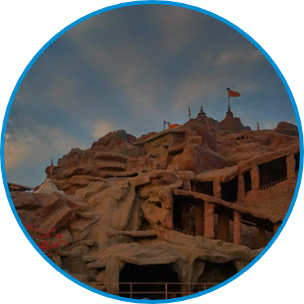
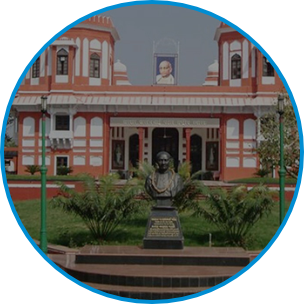
Sardar Patel National Memorial
The Moti Shahi Mahal is a palace built by the Mughal emperor Shahjahan between 1618 and 1622. It now hosts the Sardar Vallabhbhai Patel National Memorial, which is a museum and exhibition centre dedicated to Vallabhbhai Patel located in Shahibaug, Ahmedabad, Gujarat, near Civil Hospital, Ahmedabad.
Rani ki Vav
Rani ki Vav or Queen’s Stepwell is a stepwell situated in the town of Patan in Gujarat state of India. It is located on the banks of Saraswati river. Its construction is attributed to Udayamati, daughter of Khengara of Saurashtra, queen and spouse of the 11th-century Chaulukya king Bhima I. Silted over, it was rediscovered in 1940s and restored in 1980s by the Archaeological Survey of India. It has been listed as one of the UNESCO’s World Heritage Sites since 2014. 128 Kms from Ahmedabad.
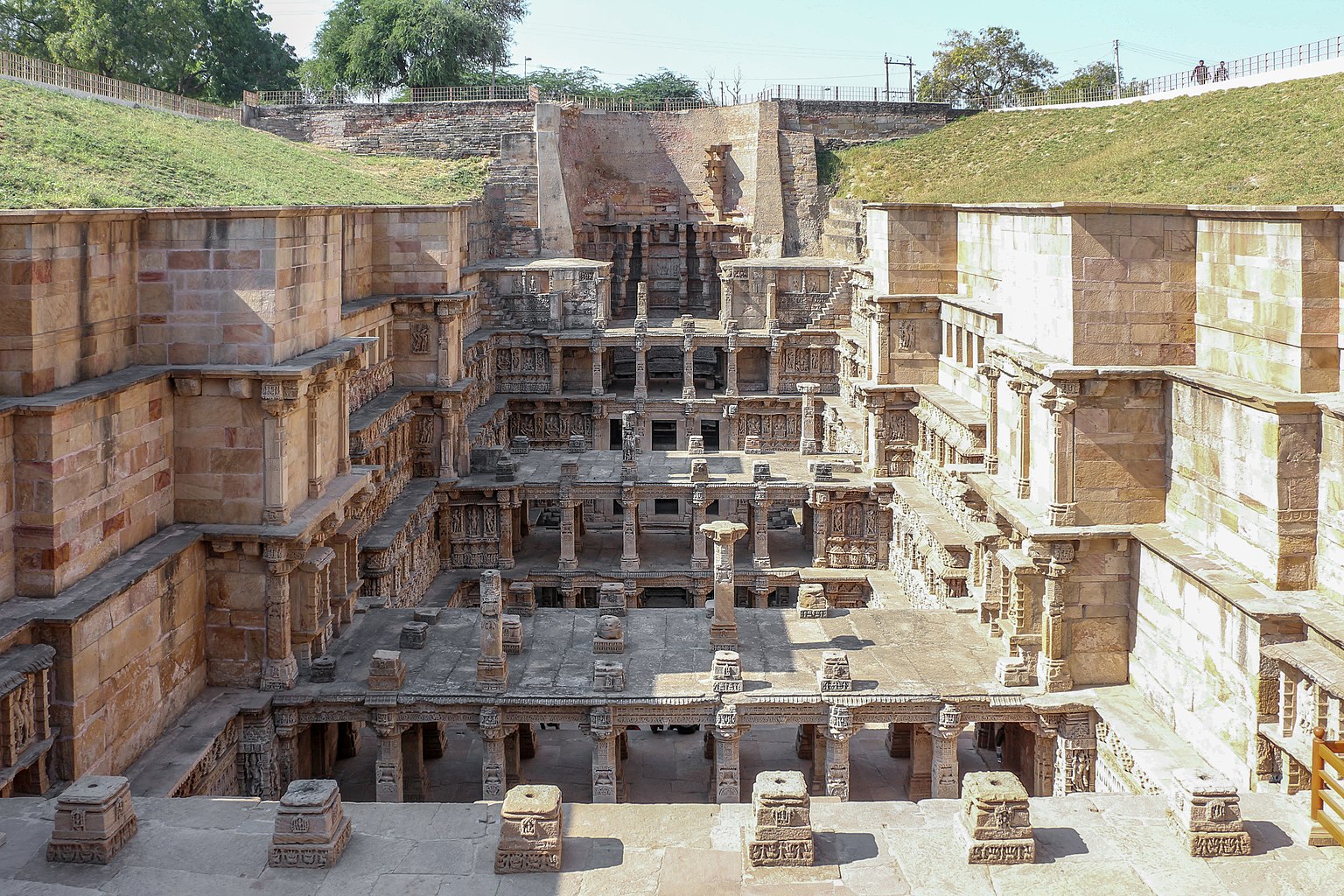
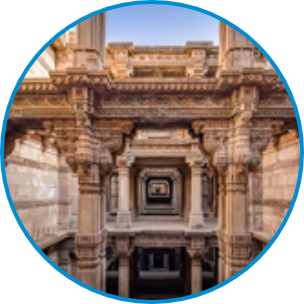
Adalaj Step Well
The flamboyant 15th-century stepwell, has lost only little of its grandeur over the last few centuries. Till date, the intricate carvings on the pillars that support the five storeys are mostly intact; the beams work as pit stops for pigeons flying in and out and the structure still leaves jaws dropped for swarms of people. The step-well represents the Indo-Islamic fusion architecture that percolated through the many stepwells of the period. There are some fascinating features of the vav that make this an important emblem of superior architecture. The opening in the ceilings above the landing allows light and air to enter the octagonal well, but direct sunlight never touches the steps except at noon. It is said that the temperature inside the well is six degrees cooler than outside. The stepwell has three entrances. The stairs lead to an underground storey, which has an octagonal opening on top. The walls are covered in ornamental carvings with mythological and village scenes. Some of them include Ami khumbor (a pot that contains the water of life) and the Kalp vriksha (a tree of life) carved out of a single slab of stone. There is a belief that the small frieze of Navagraha (nine-planets) towards the edge of the well protects the monument from bad omens.
Rannotsav
Rann Utsav is one of the most eagerly-awaited tourism events of India, which celebrates the marvels of nature at the White Desert and the rich cultural and artistic heritage of Kutch. The concept of Rann Utsav was envisioned by Hon’ble Prime Minister Shri Narendra Modi, the then Chief Minister of Gujarat. 450 Kms from Ahmedabad .
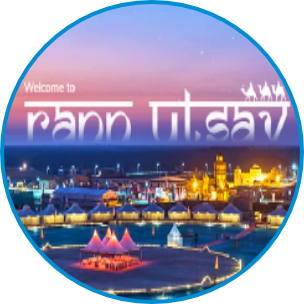
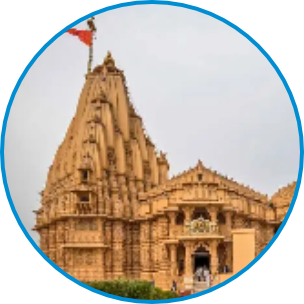
Somnath Temple
The Somnath temple, also called Somanātha temple or Deo Patan, is located in Prabhas Patan, Veraval in Gujarat, India. One of the most sacred pilgrimage sites for the Hindus, they believe it to be the first among the twelve Jyotirlinga shrines of Shiva. 404 Kms from Ahmedabad.
Dwarka
Dwarka is an ancient city in the northwestern Indian state of Gujarat. It’s known as a Hindu pilgrimage site. The ancient Dwarkadhish Temple has an elaborately tiered main shrine, a carved entrance and a black-marble idol of Lord Krishna. Dwarka Beach and nearby Dwarka Lighthouse offer views of the Arabian Sea. Southeast, Gaga Wildlife Sanctuary protects migratory birds and endangered species like the Indian wolf. 439 Kms from Ahmedabad.
